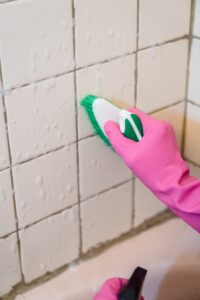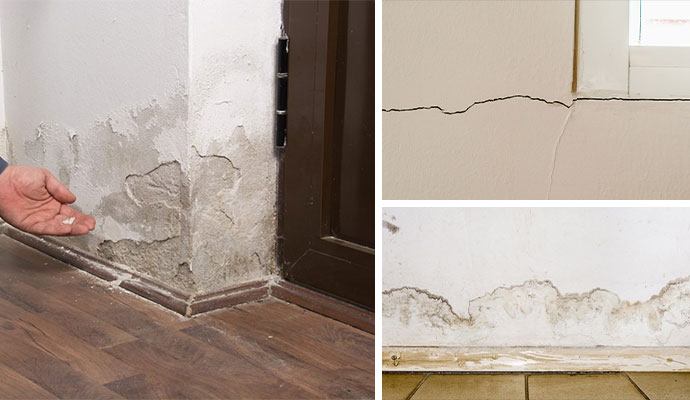Locate and Repair a Stain from Water on Walls: Extensive Manual
Locate and Repair a Stain from Water on Walls: Extensive Manual
Blog Article
Listed here below you can get lots of helpful additional info with regards to How to Find and Repair Water Leaking in the Wall.

Water discolorations on walls are not pleasant to the eyes. Occasionally it seems almost inevitable to experience water stains on wall surfaces in homes.
Property owners living in moist regions regularly deal with the anxiety of water spots on wall surfaces. With accurate and well-shaped details on the causes of water spots and also punctual repair processes, you will always be a step ahead of such occurrences.
3 Typical Causes of Water Stains on Wall Surfaces
As opposed to common belief, water discolorations on wall surfaces do not always originate from bad building products. There are a number of sources of water spots on walls. These consist of:
Poor Drain
This will prevent water from leaking into the wall surfaces. This links to excessive dampness that you discover on the walls of your building.
The leading reason of damp wall surfaces, in this situation, can be a poor drain system. It can also be because of inadequate administration of sewer pipes that go through the building.
Moist
When hot moist air meets with dry cold air, it creates water beads to base on the wall surfaces of structures. When there is heavy steam from food preparation or showers, this occurs in washrooms and kitchens. The water droplets can tarnish the surrounding walls in these parts of your house and also infect other locations.
Wet or condensation influences the roof covering as well as wall surfaces of buildings. This triggers them to show up darker than other areas of the house. When the wall is wet, it produces an ideal setting for the growth of fungi as well as germs. These may have adverse impacts on health, such as allergic reactions and also respiratory system conditions.
Pipeline Leaks
Many residences have a network of water pipes within the wall surfaces. This makes sure that the pipes are well away from the reach of destructive rats. It always enhances the practicality of such pipelines, as there is little oxygen within the wall surfaces. This discourages corrosion.
Yet, a downside to this is that water leak impacts the wall surfaces of the building and also causes widespread damage. A telltale sign of damaged pipes is the appearance of a water tarnish on the wall surface.
Water Spots on Wall Surface: Repair Tips
Home owners would generally want a quick fix when dealing with water spots. They would certainly quickly understand this is detrimental as the water spots repeat. Here are a few useful pointers that will assist you in the fixing of water discolorations on wall surfaces:
Pro Suggestion
A houseplant in your house likewise raises its humidity. So, if your house is already humid, you may want to introduce houseplants with very little transpiration. An example of appropriate houseplants is succulents.
Final thought
No one wants to have water discolorations on wall surfaces in their house, it can happen to the ideal of us. This article provides you leverage, as you currently know just how to manage this problem if it does take place.
It is always best to recruit specialist services to help deal with the problems in your home.
In some cases it appears nearly inescapable to experience water stains on wall surfaces in houses.
Contrary to preferred belief, water discolorations on wall surfaces do not always stem from poor building materials. There are numerous reasons of water spots on walls. The water beads can stain the surrounding walls in these parts of your residence and spread to various other areas.
Right here are a few valuable pointers that will guide you in the repair work of water spots on walls:
CHECKING FOR WATER DAMAGE
Water damage can be costly, and it may begin before you even notice the first signs of trouble. Water damage can cause mold and mildew in your walls and floors, which can create an abundance of health concerns for your family. It can also lead to costly repairs of various appliances and general home fixtures. To avoid the pricey consequences of water damage, here are Warner Service’s top 5 places you should check:
The walls – The easiest place to spot the beginnings of water damage is on the walls and ceilings of your home. If water damage is present, there will most likely be water stains, especially around the windows and doorframes, and/or cracks in the drywall. If a stain looks unusual (discolored to brown, black or gray, raised texture), has a swollen appearance or is soft to the touch, contact a professional immediately. The pipes – To avoid water damage, consistently check the pipes in your kitchen (especially the dishwasher and ice maker), bathrooms, laundry room (specifically washing machines) and basement for corrosion, leaks and water stains. Pay special attention to where the pipes connect in your home and the location of caulking around the bathroom fixtures, including toilets, sinks, showers and tubs. Missing or loose caulking and grout could be signs of leaking water. This seepage can also quickly cause mold and rust, so double check your water heater and tank for wet spots on the floor. The floor – Water damage is very easy to spot on the floor. Look for any warping or buckling of the material, especially in the basement. If your home has wood flooring, look for bright white or dark stains. If your home has carpeting, keep it dry and clean. A damp carpet that smells of mold could cause water damage and health problems. To avoid this, consider installing floor pans under your appliances to help prevent damages from small, slow and undetected leaks. The basement and attic – If your basement or attic smells odd check for mold and mildew around the area, especially the valley where the roof meets. While you are inspecting those areas, check for wall cracks, floor stains, rust and dampness in the insulation. If you live in a colder and/or rainier climate, perform routine checks for water damage from melting snow or ice and rain. The exterior – Check the roof for damaged flashing and missing, cracked or curled shingles. There should also be no standing water anywhere outside your home. This could be caused by puddles, leaky rain gutters or hoses, poor drainage, or short gutter spouts. Invest in a sump pump system or water flow monitoring system, and perform routine maintenance on these outdoor appliances to avoid indoor water damage.

Do you really like reading about How to Find and Repair Water Leaking in the Wall? Create feedback further down. We'd be delighted to listen to your thoughts about this review. Hoping that you visit us again in the near future. Enjoyed reading our entry? Please share it. Let another person locate it. Thank you so much for taking the time to read it.
Trusted help? Ring now. Report this page